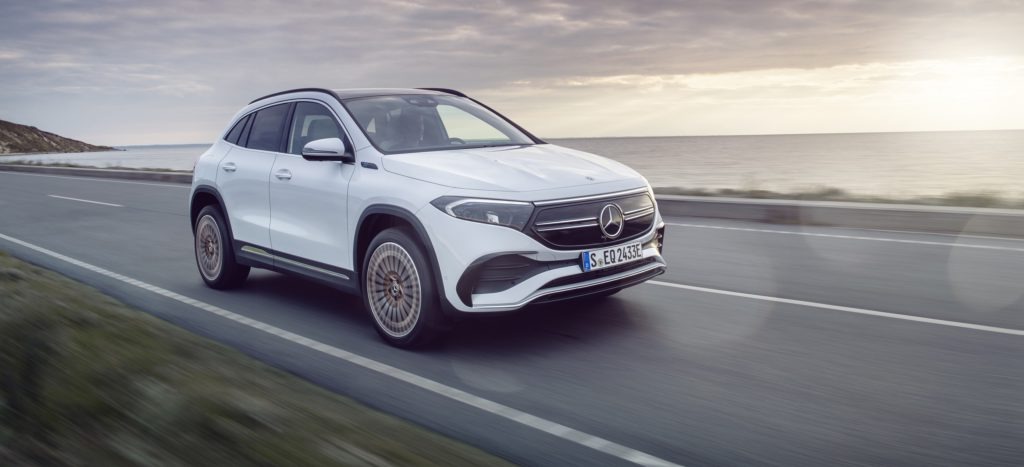Daimler to become Mercedes-Benz as it spins off truck business
05 February 2021

5 February 2021
Daimler is to undergo a fundamental change in its structure, spinning off its trucks business and renaming itself Mercedes-Benz. The move is intended to help the company unlock the full potential of its business in a zero-emission future.
Daimler Truck will become a listed company with a majority stake distributed to Daimler shareholders. Mercedes-Benz will continue to develop models for both the passenger car and van markets. Diverging the business will allow each unit to focus on new technologies that are impacting their respective sectors.
Signs of a shift in policy emerged last year when Daimler announced it was developing hydrogen systems for its trucks business while cancelling plans for fuel-cell-powered cars. As the commercial and car markets are likely to take different paths towards zero-emissions, each company will now be able to put funding and resources into its own development rather than share the pot and restrict development as a result. The split is expected to occur at the end of this year, with an extra-ordinary shareholder meeting in Q3 to discuss the final plans and obtain approval.
Corporate structure
′This is a historic moment for Daimler. It represents the start of a profound reshaping of the company. Mercedes-Benz Cars & Vans and Daimler Trucks & Buses are different businesses with specific customer groups, technology paths and capital needs.’ said Ola Källenius, chairman of the board of management of Daimler and Mercedes-Benz.
′Both companies operate in industries that are facing major technological and structural changes. Given this context, we believe they will be able to operate most effectively as independent entities, equipped with strong net liquidity and free from the constraints of a conglomerate structure,’ he added.
As part of a more focused corporate structure, both Mercedes-Benz and Daimler Truck will be supported by dedicated captive financial and mobility service entities. The company plans to assign resources and teams from its current Daimler Mobility business to both brands.
′We have confidence in the financial and operational strength of our two vehicle divisions. And we are convinced that independent management and governance will allow them to operate even faster, invest more ambitiously, target growth and cooperation, and thus be significantly more agile and competitive,’ commented Källenius.
Sustainability needs
Daimler had been struggling in recent years, announcing a series of profit warnings and initially struggling with its CO2 targets following the introduction of the Worldwide Harmonised Light-Vehicle Test Procedure (WLTP). Last year, the company managed to turn things around, tripling sales of plug-in hybrid (PHEV) and battery-electric (BEV) vehicles, and forecasting that it met its emissions figures to avoid any EU-sanctioned penalties.
′We will continue to push forward with our ‘Electric first’ strategy and the further expansion of our electric model initiative. Based on our current knowledge, we expect to meet the CO2 targets in Europe again in 2021,’ said Källenius.
With separate CO2 targets for passenger cars and trucks, Daimler will be keen to keep up this momentum, especially with stricter EU regulations for 2025 and 2030. Therefore, separating its trucks business will give Mercedes-Benz more focus on ensuring it meets guidelines by focusing on its electrification plans.
Further strategy
In October, Daimler unveiled a raft of plans that would see Mercedes-Benz focus on the luxury market with a shift to electrically-chargeable vehicles (EVs). The company plans for the number of internal combustion engine (ICE) models it offers to drop 70% by 2030. Part of this plan could see its range of compact models decrease as it focuses its product portfolio on the most profitable parts of the market.
′We intend to build the world’s most desirable cars,’ said Källenius at the time. ′It is about leveraging our strengths as a luxury brand to grow economic value and enhancing the mix and positioning of our product portfolio. We will unlock the full potential of our unique sub-brands – AMG, Maybach, G and EQ. Our strategy is designed to avoid non-core activities to focus on winning where it matters: dedicated electric vehicles and proprietary car software. We will take action on structural costs, target strong and sustained profitability.’
By divesting itself of Daimler Trucks, the carmaker can now focus on expanding new technologies in the passenger car market, including expanding its EQ line-up of BEVs. It plans to increase its range in the shortest space of time, meaning product development resources and expertise will be shifted to electric-drive projects.